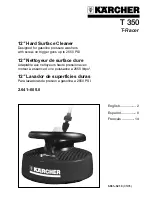
Washing tips
Page EN-23
Typical washing weights
Bed sheets
Approx. 550 g
Duvet covers
Approx. 700 g
Cushion covers
Approx. 180 g
Tablecloths
Approx. 250 g
Terry towels
Approx. 200 g
Tea towels
Approx. 90 g
Men’s shirts
Approx. 250 g
Women’s nighties
Approx. 180 g
Pyjamas
Approx. 450 g
Bathrobes
Approx. 1200 g
Work overalls (synthetic) Approx. 300 g
Handkerchiefs
Approx. 20 g
The right washing detergent
– Only use detergent suitable for washing
machines. Other cleaning products, such
as scouring powder, household cleaning
agents, etc., will damage the appliance and
your laundry.
– Do not use liquid detergent in the pre-wash
cycle.
The right dosage
The motto ‘more is better’ does not apply to
detergents and fabric-care products. They
must be dosed properly to achieve the per-
fect wash result.
– If necessary, use a smaller dosage of de-
tergents and fabric-care products if the
drum is not filled completely. For exam-
ple, for half loads, only use about half the
amount needed for a full drum.
– Always adjust the amount of detergent to
the hardness of the water. If your tap water
is soft, you need less detergent.
Information about the water hardness in
your area is provided by the waterworks
responsible. The water hardness is also
shown on the invoice from your water sup-
plier.
– Dose detergent according to how dirty
your laundry is. Laundry that is less dirty
requires less detergent.
– Highly concentrated detergent (also known
as compact detergent) in particular re-
quires accurate dosage. Even small de-
viances can have a major impact when it
comes to this.
The following wash results are a sign of incor-
rect dosage of detergent:
– Too much detergent:
– Heavy foam formation
– Poor washing and rinsing result
– Skin irritation caused by leftover deter-
gent in the clothing
– Not enough detergent:
– Laundry turns grey
– Grease marks (grey clumps of grease
and dirt on laundry)
– Build-up of limescale deposits on the
drum, heating elements and/or laundry
Fabric-care products
– Do not use fabric softener in the same
wash cycle as starch, fabric conditioner, or
finishes.
– Before dispensing viscous fabric-care
products, mix them together with a little
water to thin them out.
– Only use powder starch according to the
instructions on the packet and not with high
temperatures, or it may form clumps.
















































